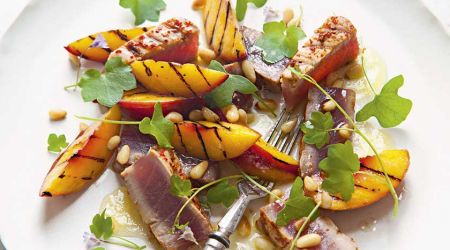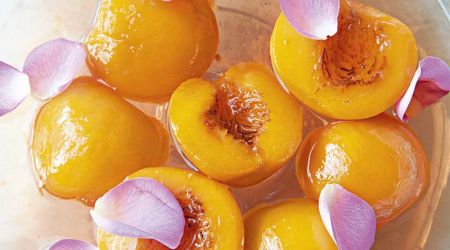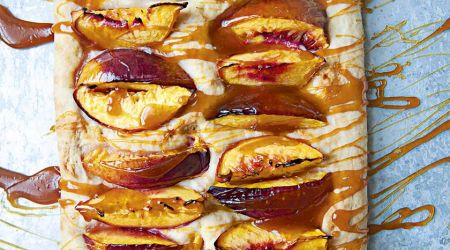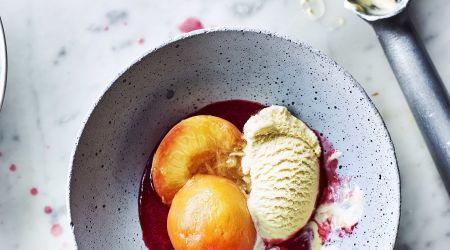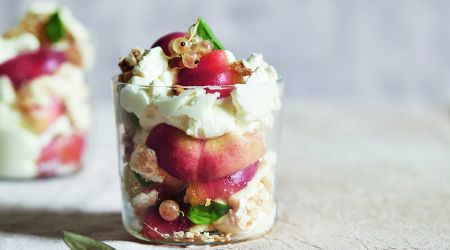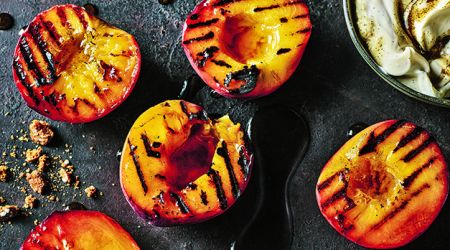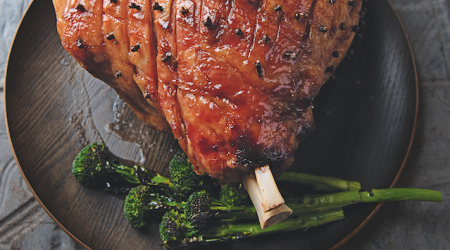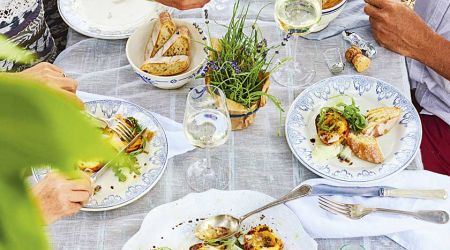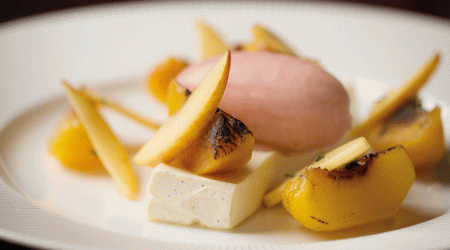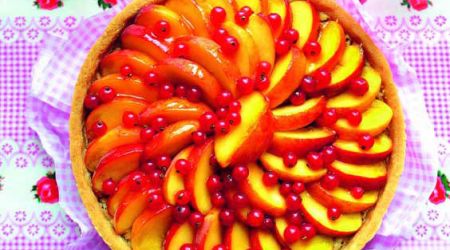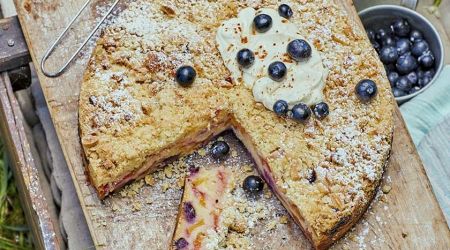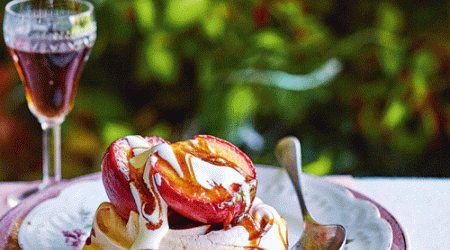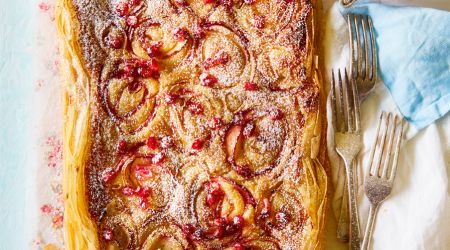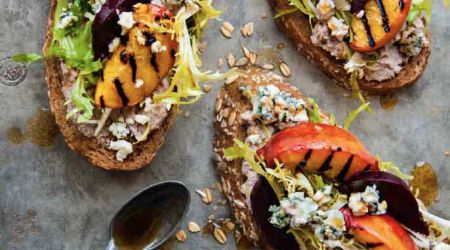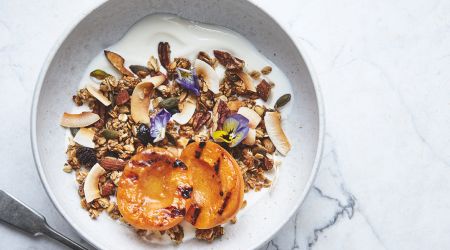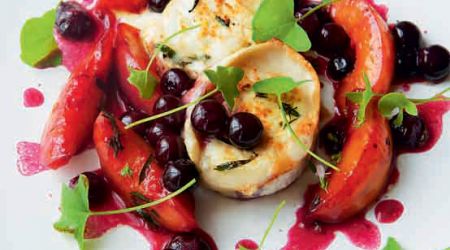Peaches & nectarines
Plump and juicy, there’s something seductive about this stone fruit. Clarissa Hyman takes you through her first time experiencing its virtues
I tasted my first golden-pink nectarine on a trip to San Francisco more years ago than I care to admit. I was still an unadventurous food explorer: it was not that long since I realised tinned sliced peaches actually came from fruit-bearing trees.
Velvety peaches were my Californian fruit of choice but was the nectarine a peach or a plum with attitude? They are, in fact, a smooth-skinned variety of peach of mysterious origin that first appeared in Britain in the early part of the 17th century. The name possibly comes from German and Dutch words meaning nectar-peach. So alike are peaches and nectarines that peach trees can sometimes spontaneously produce nectarines and vice versa.
Peaches were born in the mountain valleys and upland forests of central Asia. They need both summer sunshine and winter cool. Their natural home is in a temperate climate; they fail to thrive in and, in fact, detest the tropics.
Wild peaches were already cultivated in China around 2,000BC. On his travels, Marco Polo saw yellow and white peaches, ‘great delicacies’, for sale ‘weighing fully two small pounds apiece.’ They were also much prized, as a Chinese proverb suggests: ‘Rather one bite of a peach than eat a basketful of apricots’.
Their Latin name, Prunus persica, traces their spread to Persia and Asia Minor and it’s likely they arrived in Greece during the 4th century BC as a result of Alexander the Great’s Asian campaigns.
In Britain, the peach was re-established in the 16th century after cultivation all but disappeared during the Dark Ages. In the same century, the Spaniards took the peach to America. Nowadays, California produces about half the American crop, followed by South Carolina, Georgia (The Peach State) and New Jersey.
The ‘fuzz-less’ peach was first noted in France in medieval times. And by 1629, there were six varieties in England.
Poet John Keats wrote of the sensual, self-indulgent pleasure of eating a nectarine – ‘It went down all pulpy, slushy, oozy – all its delicious embonpoint melted down my throat like a large, beatified strawberry.’
However, both fruits were a luxury in northern Europe until canning and refrigerated transport brought them to the masses. Tinned peaches have a different flavour to fresh but they can still be good. Nectarines, curiously, lose their distinctive qualities when canned.
In this country, according to gardening writer Sarah Raven, peaches are most successfully grown in East Anglia and the south-east. Nectarines are much trickier.
There are two categories of peach: clingstone peaches have pulp that sticks to the stone; freestone varieties have flesh that pulls away easily. Each includes fruit with yellow and white flesh. There are many named cultivars, including Doughnut, which has a sunken middle and a sweet flavour with a hint of almond.
Pêches de vigne are small red-fleshed fruits from the vineyards of the Rhône Valley and only only available for a few weeks.
Spanish Calanda peaches are large, firm and sweet, hand-wrapped in waxed paper bags as the fruit matures on the tree.
Fresh peaches and nectarines in their prime are so good that it seems a shame to cook them but you can poach them in wine or incorporate them into pies. Celebrated chef Michael Caines recommends pancakes with roasted peaches, nectarines and lavender honey. But they need not be limited to sweet dishes. James Tanner has a recipe for seared scallops with nectarine and chilli, while Nick Nairn suggests luxurious sautéed pork with peaches, white wine, cream and herbs.
Unfortunately, many supermarkets sell fruit that has been picked too early: the problem is that if too soft, the peach will spoil quickly. It makes finding the perfect peach even more of a prize.
There is a Sino-Tibetan 16th-century altar cloth that depicts a goddess offering peaches to the buddhas of meditation. It reminds me of my fruit epiphany centuries and continents later – and the erotically charged moment of consumption.
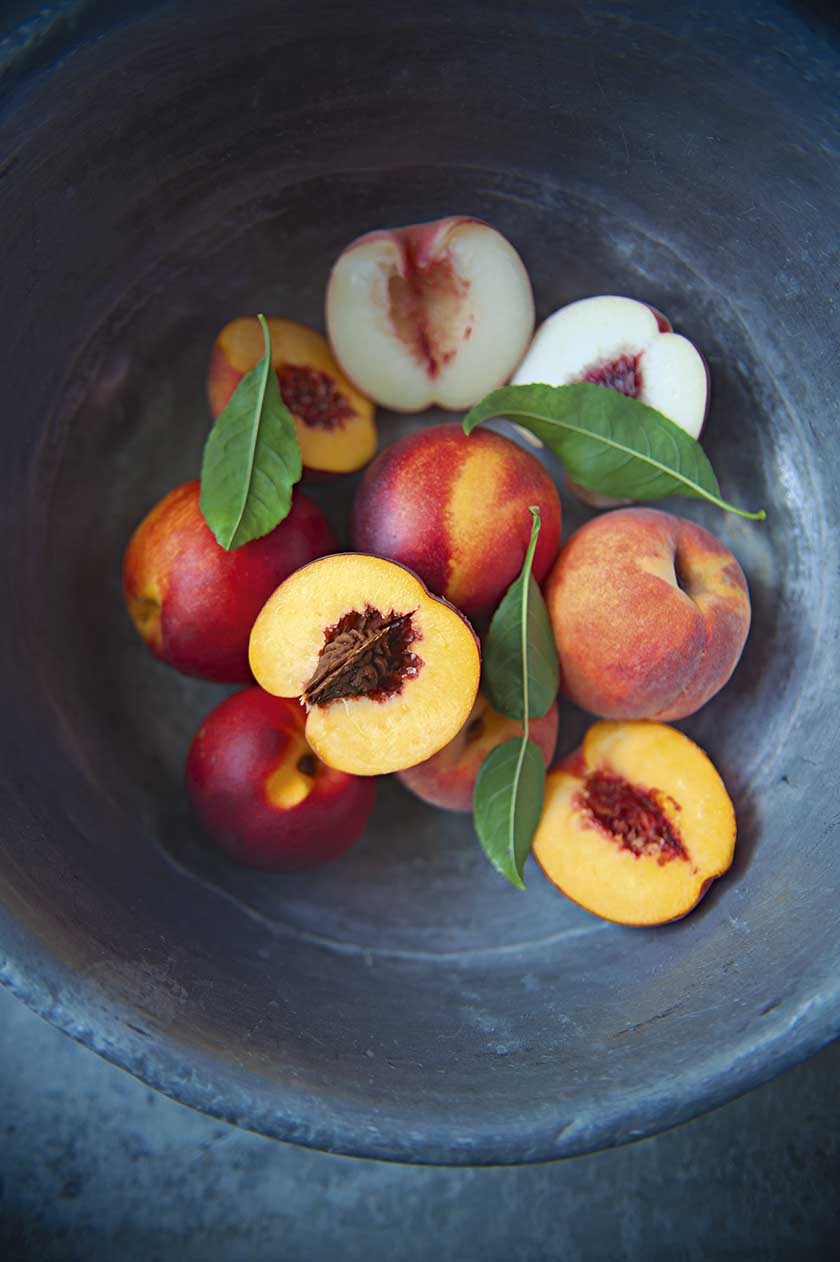
Recipes
Get Premium access to all the latest content online
Subscribe and view full print editions online... Subscribe

